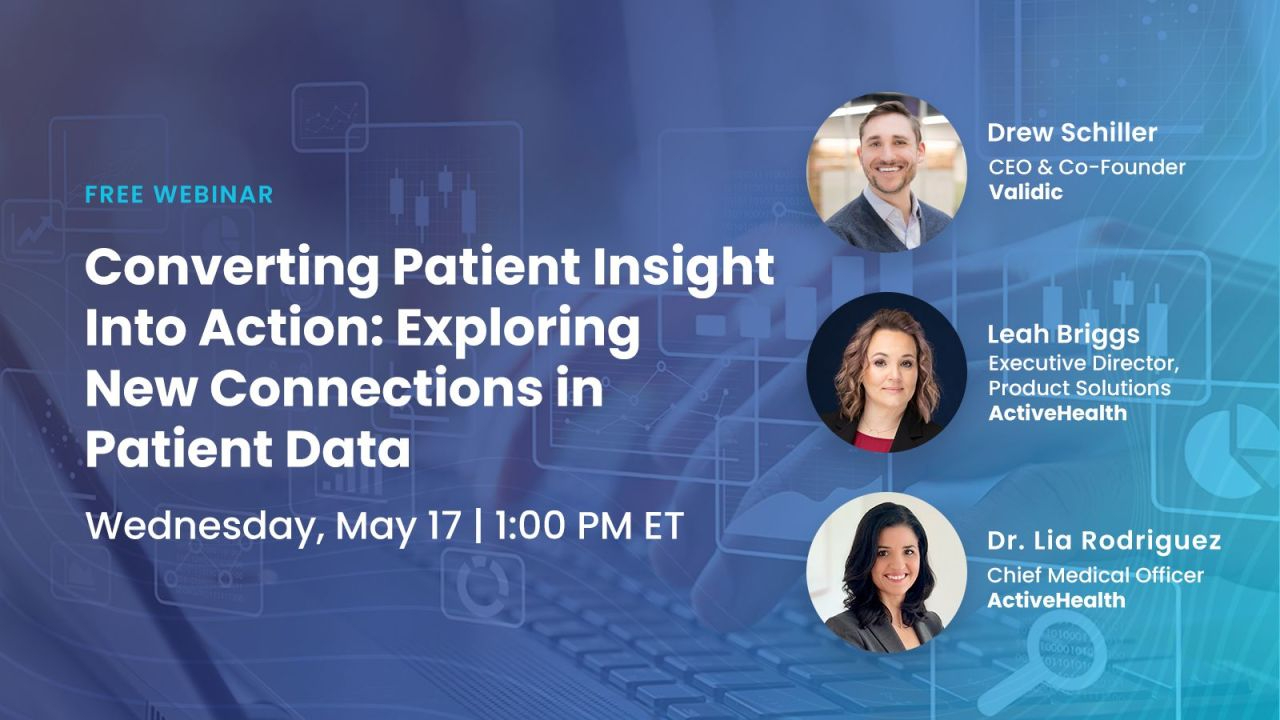[On demand] Converting patient insight into action: Exploring new connections in patient data
Collecting, protecting, and using remote patient data to improve care and outcomes is a long-term priority for many healthcare organizations. We explored those considerations in our recent webinar with ActiveHealth.

Our CEO Drew Schiller, alongside Leah Briggs, executive director, product solutions, ActiveHealth and Dr. Lia Rodriguez, chief medical officer, ActiveHealth, discussed how well-designed, remote care programs deliver actionable insights that uncover opportunities to improve patient health and accountability.
Personalizing patient care
Consumers have grown familiar with personalized interactions. Netflix makes personalized entertainment suggestions based on our previous watch history. Amazon recommends additional or bundled products based on our current cart or past purchases. Even financial institutions provide investment advice based on your banking history and savings account details.
71% of customers have come to expect personalized interactions with the brands they interact with. 76% of customers grow frustrated when they don’t receive that personalized messaging.
Across virtually every consumer-facing industry, we expect sellers to know us. We expect that companies already understand our goals and our challenges, and are ready to prescribe solutions to help us improve quality of life.
Healthcare organizations rely on wearables and smart devices for personalized health information. In many cases, this device doubles as a person’s smartphone. Health apps can record and transmit patient data in ways that can help clinicians save an estimated 500 billable hours per year. Patients also use a variety of other wearable and health devices, from glucose monitors to blood pressure cuffs, that help keep them on track and accountable for their health and wellness goals.
Digital and live health coaching solution ActiveHealth was an early adopter of health tracking devices, first implementing early-stage wrist wearables available on many retail shelves. Market and industry evolution quickly provided convincing evidence that they would provide long-term value.
Remotely collected health data fills in the gaps between office visits, serving as a powerful extension to a clinician’s treatment and care plan by providing context and continuity about a patient’s health status.
Dr. Rodriguez: “[Wearable-fed data] is definitely going to fuel and provide me a more comprehensive clinical picture of what’s going on with that person beyond what they are sharing, what they remember to share, what they are willing to share. …There’s so many different aspects to that relationship where that wearable device information actually provides a more comprehensive picture of what’s going on with a patient’s clinical condition.”
A common question: how much data is too much? For example, what is an appropriate cadence for glucose readings or blood pressure readings?
Dr. Rodriguez: “First, as a data nerd, I’ll say there’s never too much data, but the question then becomes how do you use it? And that’s where intelligent data monitoring becomes important. Not everything needs to be acted on. But we’re tracking it and we’re monitoring. And when something does come up that we think an action needs to be taken on, we want to make sure it gets into the hands of the person that needs to take action, whether that’s the provider or whether that’s the patient. It’s about how you manage that data intelligently and in an evidence based way.”
Leah Briggs: “It’s critical in all of our programs that we support the relationship between the patient and their physician. So in all of our programs, we are coordinating with the treating physicians to make sure that if they want [the data] daily, weekly, monthly, that we are reinforcing their treatment plan because we want to support and complement the physician-patient relationship, not disrupt it.”
On the topic of patient engagement in remote care programs:
Leah Briggs: “One of the things we like to do is to really get to the heart of their motivation. What is their intrinsic motivation for making this health change? And a lot of times patients don’t know the answer to that. So we utilize motivational interviewing techniques to draw that out of them and get them to see their why. Because once we are able to start answering why, then things start clicking. It’s not that I need to get my A1C in line. Very rarely do we hear that as my why. It’s that I don’t want to lose a foot like my great-grandmother did. That’s my motivation. And getting that out of somebody and helping them to see their why and make that connection has proven to be a really effective technique at engaging them.”
Listen to the full webinar recording to learn more about how ActiveHealth is converting insights into action for sustained behavior change and improved health.